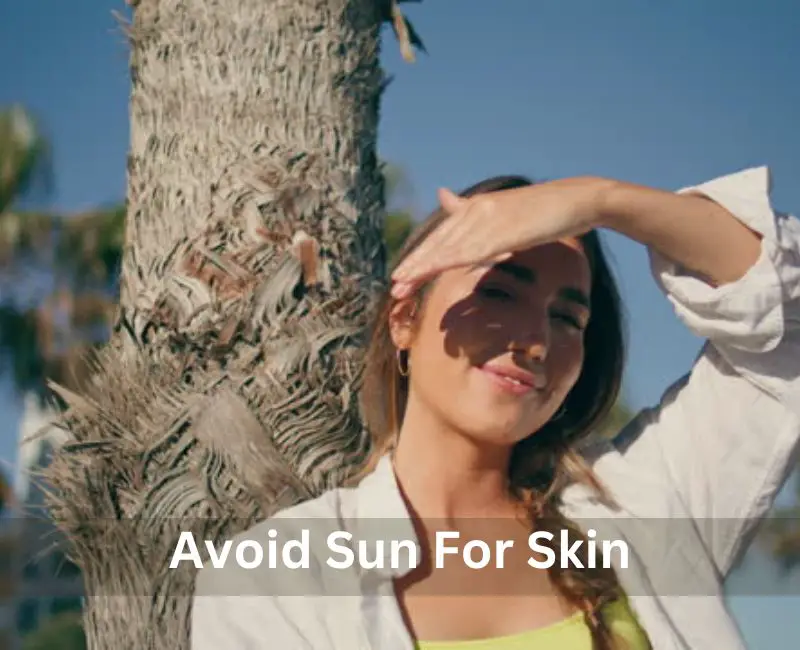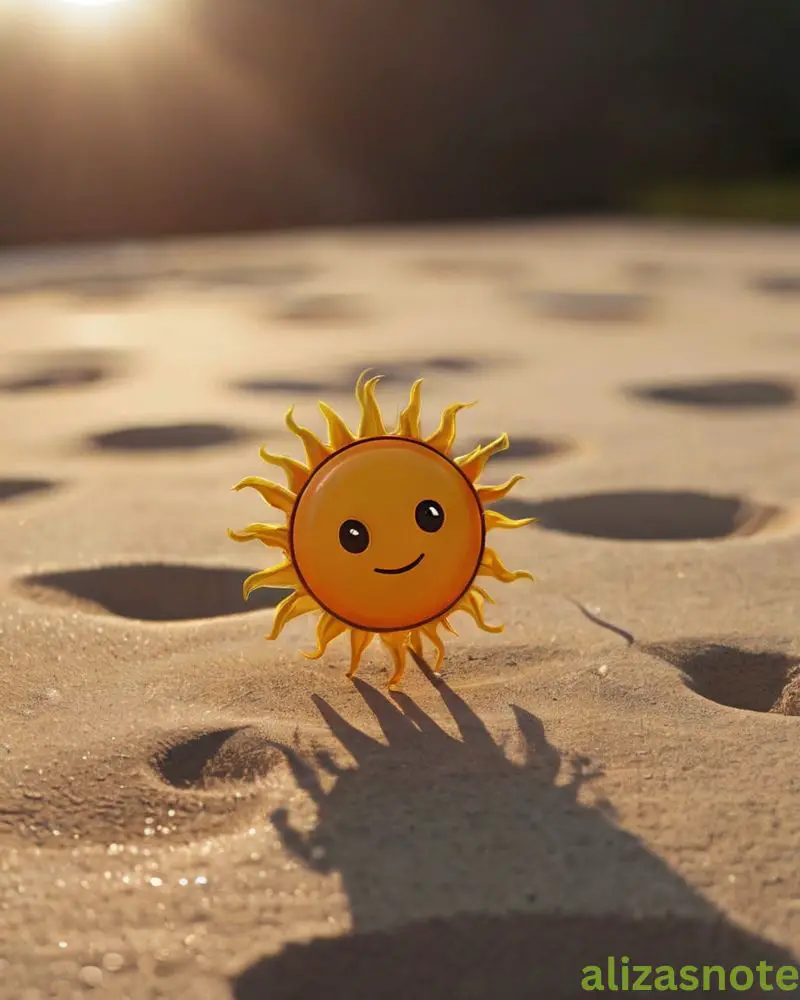As we bask in the warmth of sunny days, it’s crucial to shield our skin from harmful UV rays to avoid tanning and potential damage.
Whether you’re lounging at the beach or enjoying outdoor activities, I’ve got you covered with practical tips.
From selecting the right sunscreen and clothing to staying hydrated and seeking shade, we’ll guide you through simple yet effective strategies.
Find How to avoid getting darker in the sun, by following these tips into your routine, you can revel in the sunshine while safeguarding your skin’s health and radiance.
How to avoid getting darker in the sun
1. Apply Sunscreen Daily:
- Use a broad-spectrum sunscreen with SPF 30 or higher on all exposed skin, including the face, neck, and hands, regardless of the weather.
- Reapply sunscreen every two hours, especially during extended sun exposure or after swimming or sweating.
2. Seek Shade:
- Stay in shaded areas, particularly during the sun’s peak hours between 10 a.m. and 4 p.m.
- Utilize umbrellas, trees, or structures to create shade when spending time outdoors.
3. Cover Up:
- Opt for protective clothing like lightweight long sleeves, pants, and wide-brimmed hats.
- Choose garments with UPF (Ultraviolet Protection Factor) for enhanced sun protection.
4. Accessorize for Protection:
- Wear sunglasses with UV protection to shield your eyes and sensitive skin around them.
- Consider wearing a wide-brimmed hat or a cap with a neck flap for added coverage.
5. Limit Sun Exposure:
- Plan activities during morning or afternoon when the sun is less intense.
- Take regular breaks in shaded or indoor areas to give your skin a break from direct sunlight.
6. Maintain Skin Hydration:
- Hydrate your skin by drinking plenty of water and using moisturizers containing hydrating ingredients like hyaluronic acid or glycerin.
- Well-hydrated skin is less susceptible to sun damage and helps preserve its natural moisture balance.
7. Avoid Artificial Tanning Methods:
- Steer clear of tanning beds and sunlamps, as they can significantly increase the risk of skin cancer and accelerate skin aging.
8. Practice Year-Round Sun Safety:
- Make sun protection a daily habit, regardless of the season or weather conditions.
- Remember that UV rays can penetrate clouds and windows, so continue to protect your skin year-round.
So, get the answer about How to avoid getting darker in the sun, and safeguard your skin against sun damage, premature aging, and the risk of skin cancer while maintaining your skin’s natural tone.
Lifestyle Practices for Sun Protection
Ensuring effective sun protection involves more than just sunscreen application; it’s about adopting lifestyle habits that minimize sun exposure and safeguard your skin:
1. Protective Clothing:
Choose clothing that covers exposed skin, such as lightweight long sleeves, pants, and broad-brimmed hats. Prioritize garments with tight weaves or UPF (Ultraviolet Protection Factor) ratings for added shielding.
2. Seek Shelter:
Sun’s peak hours, normally between 10am-4pm., opt for shaded areas whenever feasible. Utilize natural shade from trees or bring along umbrellas, canopies, or parasols for portable shade.
3. Strategize Outdoor:
Plan outdoor ventures for early mornings or late afternoons when sunlight is less intense. When outdoors during peak hours, take periodic breaks in shaded spots to reduce overall sun exposure.
4. Utilize Protective:
Safeguard your eyes with sunglasses that block both UVA and UVB rays. Additionally, don a wide-brimmed hat to shield your face, ears, and neck from direct sun exposure.
5. Hydrate Diligently:
Maintain adequate hydration levels by drinking ample water throughout the day. Proper hydration supports skin health and resilience against sun-related dehydration and heat-related ailments.
6. Sunscreen:
Make sunscreen application a daily ritual, regardless of weather conditions. Opt for a broad-spectrum sunscreen with SPF 30 or higher and apply it generously to all exposed skin at least 15 minutes before sun exposure.
7. Reflective Surfaces:
Be mindful of surfaces like water, sand, snow, and concrete, which can amplify UV radiation. Take extra precautions, such as frequent sunscreen reapplication, when near such reflective surfaces.
8. Sun-Safe Practices:
Sun protection is a year-round commitment. Even on cloudy or overcast days, UV rays can penetrate clouds and windows, necessitating consistent skin protection habits indoors and outdoors alike.
By incorporating these lifestyle practices into your daily routine, you can fortify your skin’s defense against sun damage and maintain its health and vitality over time.
Skin Care After Sun Exposure
After being in the sun, it’s vital to give your skin the care it needs to recover and rejuvenate. Here’s a concise guide to post-sun exposure skincare:
1. Cleansing:
Begin by gently washing your skin with a mild, hydrating cleanser to remove any sunscreen, sweat, and debris without causing further irritation.
2. Cool Relief:
Soothe sun-kissed skin by applying cool compresses or damp cloths to alleviate discomfort and reduce inflammation. Don’t using ice directly, as it can worsen irritation.
3. Hydration Boost:
Restore moisture to your skin with a soothing moisturizer or aftersun lotion containing ingredients like aloe vera or hyaluronic acid to hydrate and calm sun-exposed skin.
4. Gentle Products Only:
Opt for skincare products free of alcohol, fragrances, or harsh chemicals that may aggravate sunburned skin. Stick to gentle, hypoallergenic formulas to prevent further irritation.
5. Drink Up:
Replenish lost fluids by drinking plenty of water to help hydrate your skin from within. Proper hydration is essential for skin recovery after sun exposure.
6. Exfoliation:
Refrain from exfoliating sunburned skin until it has fully healed. Once your skin has recovered, use a gentle exfoliator to remove dead skin cells and promote renewal.
7. OTC Solutions:
Over-the-counter remedies like hydrocortisone cream or oral antihistamines can provide relief from inflammation and itching caused by sunburn. Consult professional anytime before using any medication.
8. Shield:
Prevent further sunburn by wearing protective clothing, applying sunscreen, and seeking shade when outdoors. Sun-damaged skin is more vulnerable, so take extra precautions to protect it.
9. Monitor Skin Health:
Keep an eye on your skin for signs of blistering, peeling, or infection. If you notice concerning symptoms such as severe pain or fever, seek medical attention promptly.
Following these post-sun exposure skincare steps will help soothe your skin, promote healing, and maintain its health and radiance over time.
Last Call
- If you found this article helpful and informative, I would be grateful if you could share it with your friends, family, and anyone else who might find it beneficial.
- Spreading awareness about sun safety is vital for everyone’s skin health, and your support in sharing this message would mean a great deal.
- Thank you once again for being a part of our community and for your ongoing support. Together, let’s continue to prioritize sun protection and work towards achieving healthier, happier skin for all.
- Lets join on Pinterest.
More Skin-Glowing Content:
Bitter Gourd For Skin Brightening
Green Tea For Skin Whitening
How To Get Fair Skin At Home



